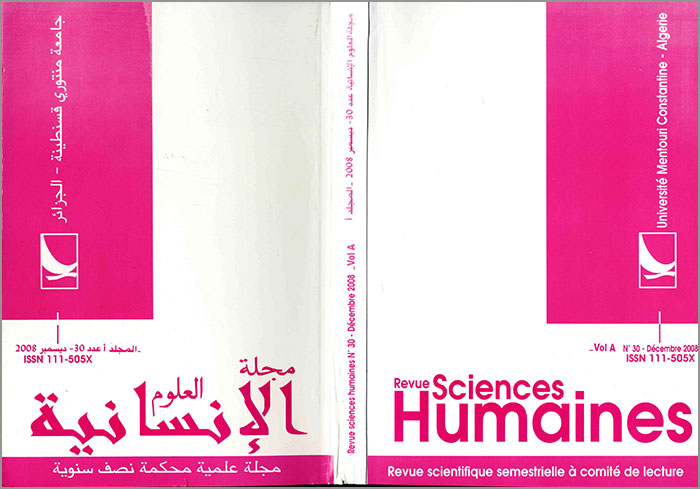A PLEA FOR CULTURE-INTEGRATED LANGUAGE TEACHING
Abstract
ATAMNA Elkhiar
Département d’Anglais
Université Mentouri
Constantine (Algérie)
Foreign language teaching no longer focuses on the development of the learners’ linguistic competence only. It has also set itself the aim to develop their intercultural communicative competence. The observation that this aim is feasible constitutes the rationale for the present paper which argues for a place for culture teaching within the English course syllabus in the English Department at the University Mentouri,Constantine,Algeria.
Downloads
References
- Brooks, N. 1986. Culture in the classroom. In J.M. Valdes (ed.), Culture Bound. Bridging the cultural gap in language teaching. Cambridge: Cambridge University Press, 123-128.
-Byram, M. 1 989. Cultural Studies in Foreign Language Education. Clevedon, Avon:Multilingual Matters.
- Byram, M and Sarries, V.E., and Taylor, L. 1991. Cultural Studies and Language Learning: A Research Report. Clevedon, Avon: Multilingual Matters.
- Corbett, J. (2000) Culture, variety and ELT. In K. Seago and N. McBride (eds) Target
Language –Target Culture ? (pp. 156–76). London: AFLS/CILT.
- Dlaska, A. 2000. Integrating Culture and Language Learning in Institution-wide Language Programmes. Language, Culture and Curriculum 1 3:3,247-263.
- Duranti, A. 1997. Linguistic anthropology. Cambridge: University Press.
- Fischer, L.M. 1994. Is Foreign Language Education Contributing to Intercultural Communication? In H. Pürschel (ed.) Intercultural Communication. Frankfurt am Main: Peter Lang.
- Geertz, C. 1973. Interpretation of Cultures. New York: Basic Books.
- Glissant, Edouard. Le Discours antillais. Paris : Seuil, 1981.
- Goodenough, W.H. 1957. Cultural Anthropology and Linguistics in P. L Gravin (ed.) Report of the Annual Round Table Meeting on Linguistics and Language, pp.74-8 Washington, Georgetown University Press.
- Hinkel, E. (ed.), 1999. Culture in Second Language Teaching and Learning. Cambridge: Cambridge University Press
- Kramsch, C.1993. Context and Culture in Language Teaching. Oxford: Oxford University Press.
- Luke, A. 1995. Text and Discourse in Education: An Introduction to Critical Discourse Analysis. In Review of Educational Research edited by M.W. Apple. Washington, DC: American Educational Research Association.
- Handford, M.2002. Developing Sociocultural Competence in the ESL Classroom. Nottingham Linguistic Circular 17 (2002)
- Nelson, G. 2000. Individualism-Collectivism and Power Distance: Applications for the English as a Second Language Classroom. The CATSOL Journal. 12/1, 73- 89.
- Pavlenko, A. and Lantolf, J. 2000. Second language Learning as Participation and the (re)Construction of Selves, in J. Pavlenko (ed.) Socio-cultural Theory and Second Language Learning. Oxford: Oxford University Press, pp.155-78.
- Samovar, L. A. and Porter, R. E. 1981. Intercultural Communication: A Reader. Belmont (California): Wadsworth.
- Tylor, E. B. 1871. Primitive Culture. Researchers into the Development of Mythology, Philosophy, Religion, Language, Art and Custom. London: John Murray.
- Ulla Connor, 1986. Contrastive Rhetoric: Cross-cultural Aspects of Second-Language Writing Cambridge: Cambridge University Press.












